These terms were coined over the years to identify the appropriate short circuit current magnitude that engineers could use to rate the switchgears, switchboards, panelboards, circuit breakers, fuses, etc.
But before I explain each term, let’s get some basics out of the way.
From circuit theory, at the point of short-circuit, the fault current is described by the following equation.
i(t) = \sqrt2 \frac{V}{Z}\sin(\omega t - \frac{\pi}{2}) + \sqrt2 \frac{V}{Z} e^\frac{t}{\frac{X}{2\pi fR}} Amps
If you look closely, the fault magnitude is a combination of AC component (the Sine function) and DC component (the exponent e function). Both functions are plotted separately in Figure 1 below. Their combination yields the i(t) curve, also shown in the same figure.
Now, let’s look at each term and their context with respect to the fault curve.
Asymmetrical (RMS) Current
This term refers to fault current magnitude at ½ cycle point. At this point the curve is highly asymmetric around the x-axis.
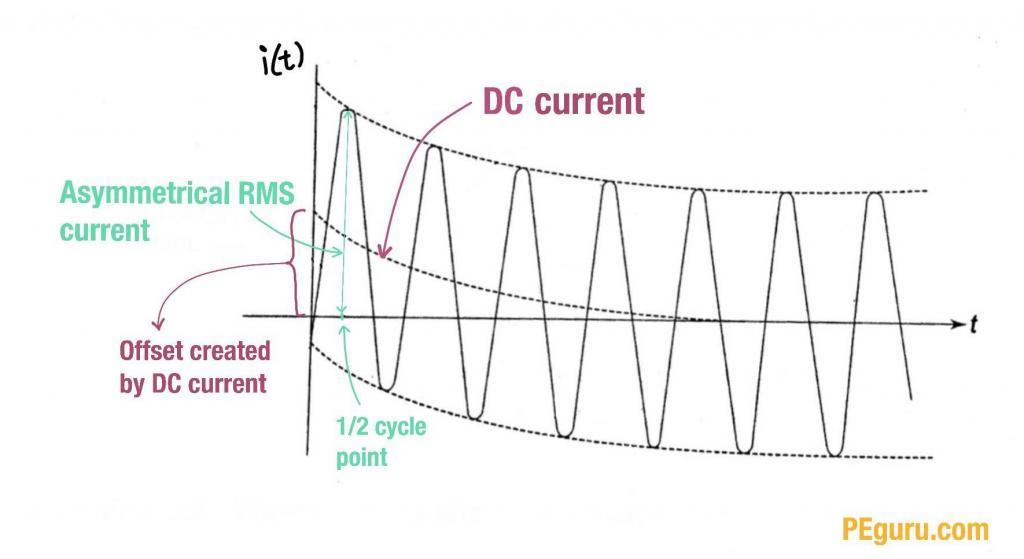
During the first half of a cycle, the fault current is at its largest magnitude – occurring at a moment when the voltage wave (not shown) is passing the reference axis.
The asymmetry is brought on by the DC offset (as shown in Figure 1). With this offset, the RMS value of the asymmetrical current is about ~1.6 times the symmetrical current.
A quick word on Root Mean Square (RMS) quantity: the RMS quantity of an AC signal (voltage or current) is a phantom quantity. It is created to compare the AC magnitude to that of the DC i.e. making sure you are comparing apples to apples. So, for example, a 5Amp RMS AC current is the same as a 5Amp DC current. However, the peak value of the AC quantity will be \sqrt2 \times 5 Amps = ~7 Amps.
Now that we know RMS magnitude is NOT the same as peak, in 1987 the IEEE committee established the term (peak asymmetrical) to make it clear that the peak asymmetrical current generates the most destructive force and not the RMS quantity. How destructive? Well, peak asymmetrical current is about ~2.7 times the symmetrical current.
To summarize, you have
- Symmetrical fault current (i.e. no DC offset)
- Asymmetrical (RMS) fault current = 1.6 \times symmetrical current magnitude
- Peak asymmetrical fault current = 2.7 \times symmetrical current magnitude
Momentary Rating
This is a half cycle rating and quite similar in meaning to RMS asymmetrical amps except it does not have the same unwieldy name.
It highlights the ability of equipment like switchgear, switchboard, circuit breaker, etc to withstand RMS asymmetrical amps.
Close & Latch Rating or Making Current
This term highlights the capability of a circuit breaker to close into a fault at the 1/2 cycle point and stay in that position without destroying its poles.
Interrupting Rating
This term pertains to fault magnitude between the 2nd cycle and the
So, what is the significance of the interrupting rating? In medium voltage and high voltage systems, circuit breakers and fuses are capable of operating in 2 cycles to 5 cycles. Therefore, this term applies to these protective devices and their interrupting capability.
Here’s a picture of the circuit breaker nameplate with the interrupting rating listed. This breaker can interrupt a fault current of 63,000amps (or lower) at 3-cycle mark.
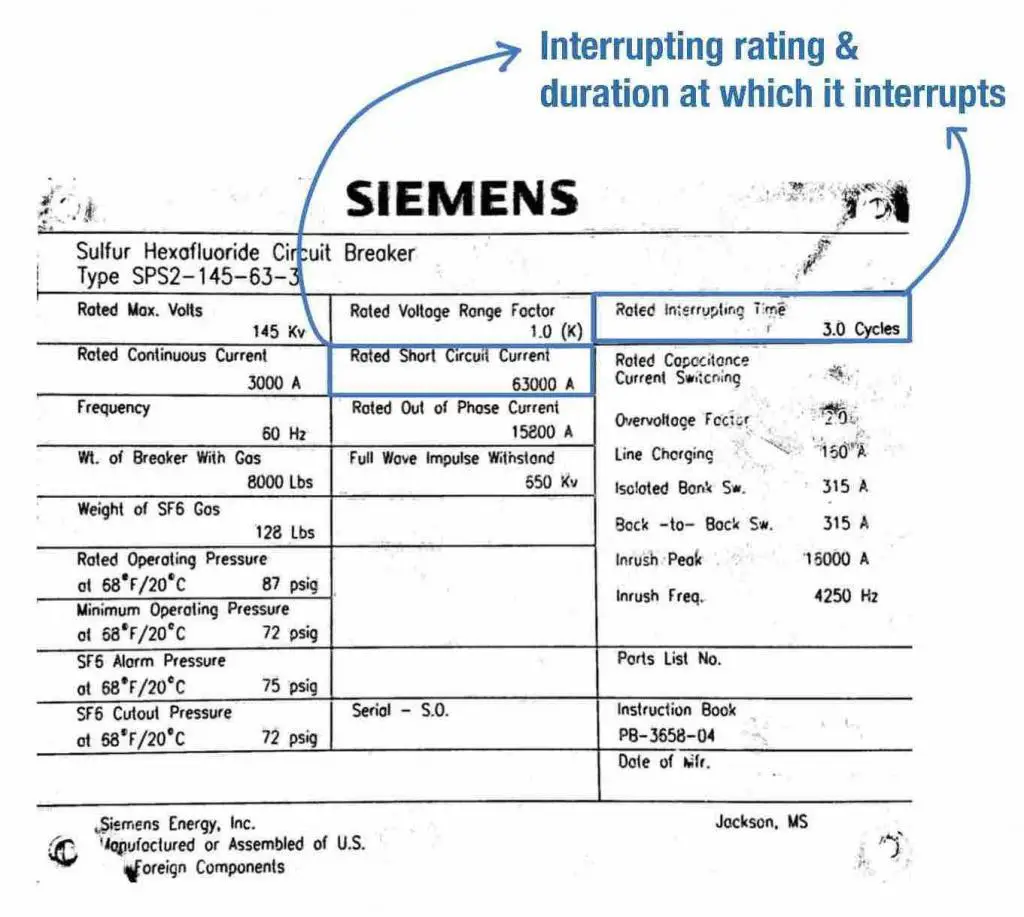
For switchgear, interrupting rating may also be specified as short circuit MVA. Why you may ask? The operating voltage of the power system fluctuates based on load. Also the fault current a device can interrupt is inversely proportional to the operating voltage. So regardless of what the operating voltage is, the product of (pre-fault) voltage and interrupting current rating is constant. It is logical to specify a SC MVA rating and not fret the voltage and current magnitudes.
Short circuit MVA is given by
MVA_{sc}=\sqrt3 \times V_{L-L} \times I_Lwhere,
V_{L-L} = Line to line voltage in kV
I_L = Interrupting current in kA
Symmetrical (RMS) Current
This term refers to fault current magnitude at the 8th cycle and beyond. In 8 or more cycles (typically 15), the fault current will decay to
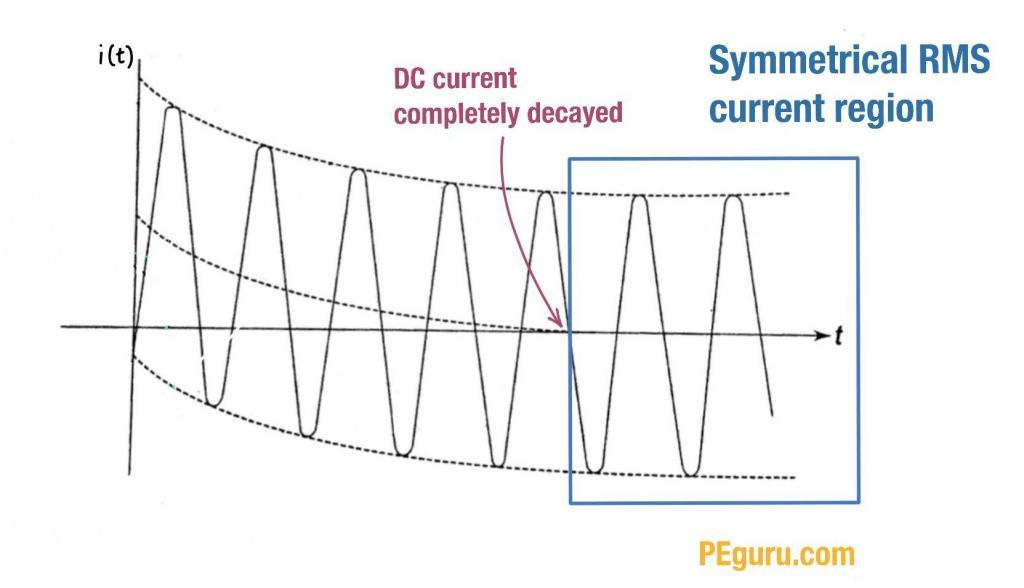
Slow operating devices (like molded case breakers) typically used in low voltage systems (1000V and below) use symmetrical RMS rating. The spec sheets implicitly list their ratings in symmetrical amps.
Low voltage panels too are rated by their symmetrical current rating.
The \frac{X}{R} ratio plays a significant role in how fast the DC current decays. In highly inductive circuits where \frac{X}{R} > 15, the DC current takes a while to decay. In other words, the equipment exposure to the asymmetry is prolonged.
Fault current rating is only one piece of information that defines a protective device. In this article you’ve learnt the various terms associated with the fault current magnitude.

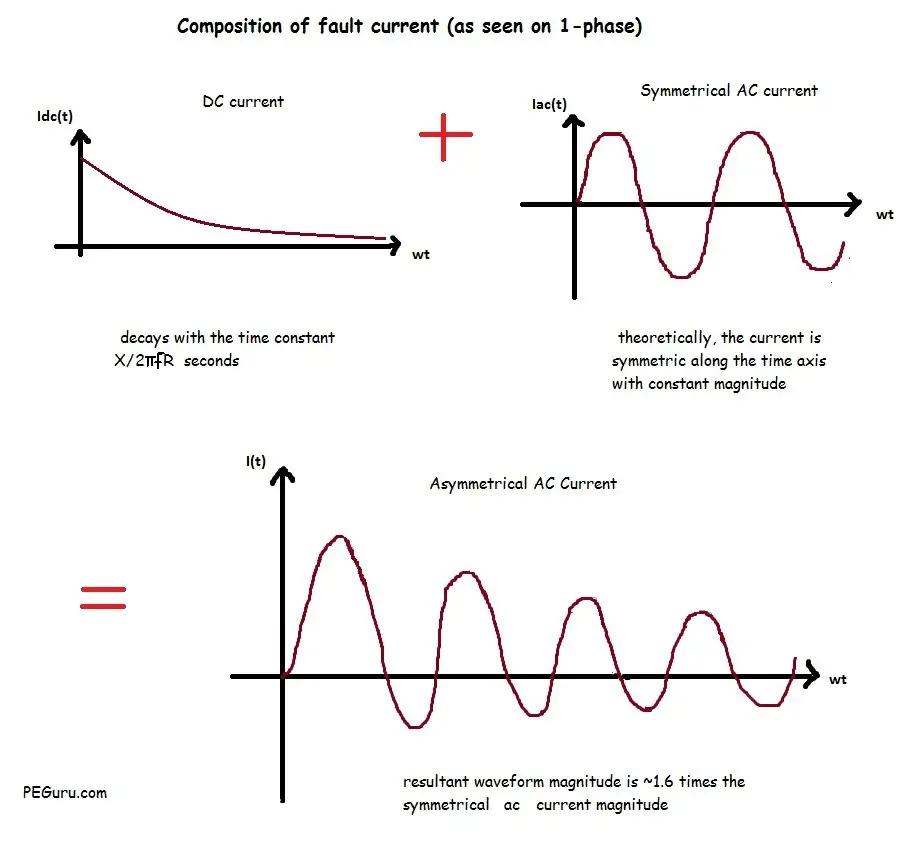
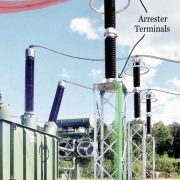

I agree that molded case circuit breakers interrupting capability is rated in Symmetrical Amps, but I don’t understand why. This article states that the reason is that they are slower operating devices, but this isn’t true. The instantaneous functions of these breakers typically operate in less than 1 cycle. Reference (I think this is a pretty typical MCCB):
chrome-extension://efaidnbmnnnibpcajpcglclefindmkaj/https://www.eaton.com/content/dam/eaton/products/electrical-circuit-protection/molded-case-circuit-breakers/series-c-molded-case-circuit-breakers/g-frame-2-&-3-pole-time-current-curves-td012057en.pdf
You say : Slow operating devices (like molded case breakers) typically used in low voltage systems (1000V and below) use symmetrical RMS rating.
Actually MCBs operate much faster 1/2 cycle to 3 cycles because sensing and everything is inbuilt and low inertia , as opposed to MV breakers where the relay is external, there is relay operating time and then there is breaker operating time. Please correct your article if necessary in light of this as you have provided a very good info and will be useful to many people.
1/2 to 3 cycle rating should be applicable to LV MCBs.
Very well laid out! Thank you for taking the time to explain this.
Great blog Mohammed, thank you for sharing.
Where does the definition of aperiodic short circuit current can be accommodated ?
Is aperiodic short circuit current the same as asymmetrical short circuit current ?
It was interesting when you talked about how a power system’s operating voltage needs to be able to fluctuate to meet the current load. My brother needs to choose a switchboard to have installed in the office building he’s constructing. The info you shared here should help him choose a switchboard with the right capacities for his needs. https://www.auspowerhvps.com.au/switchboards